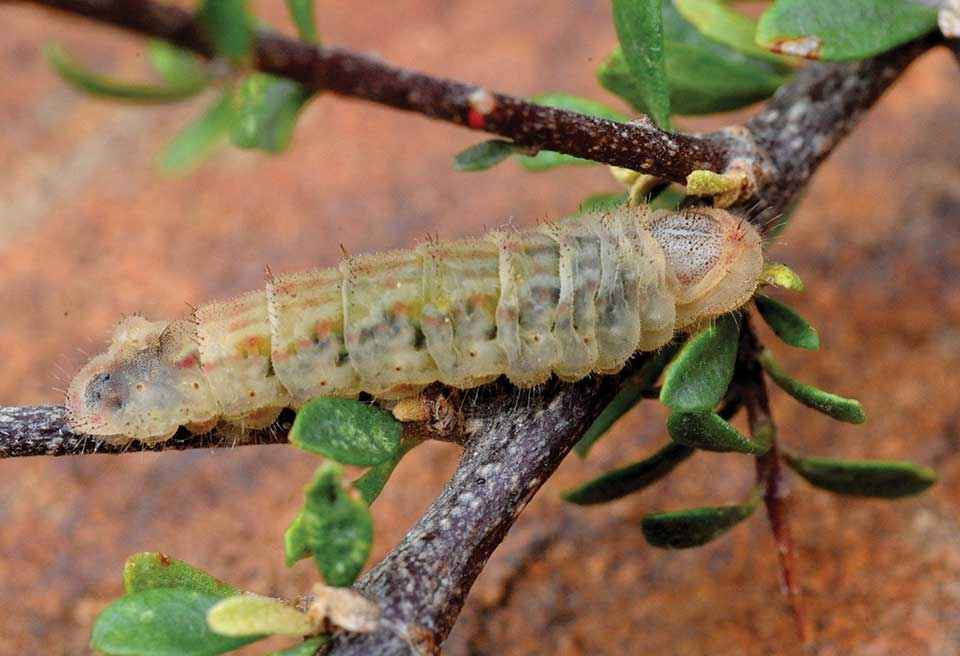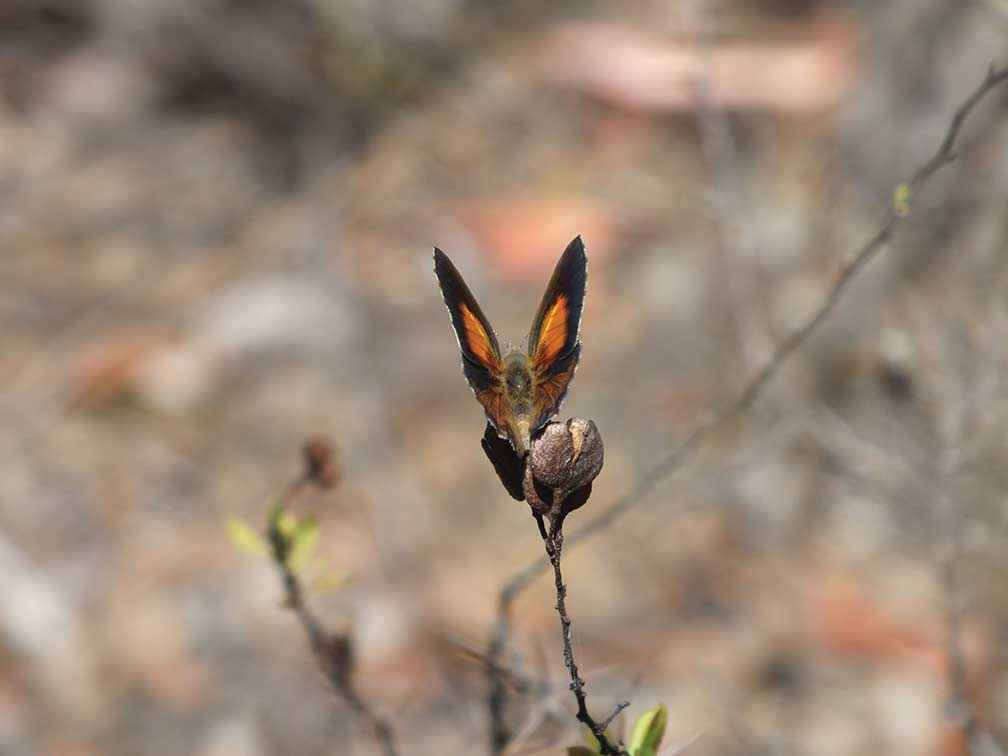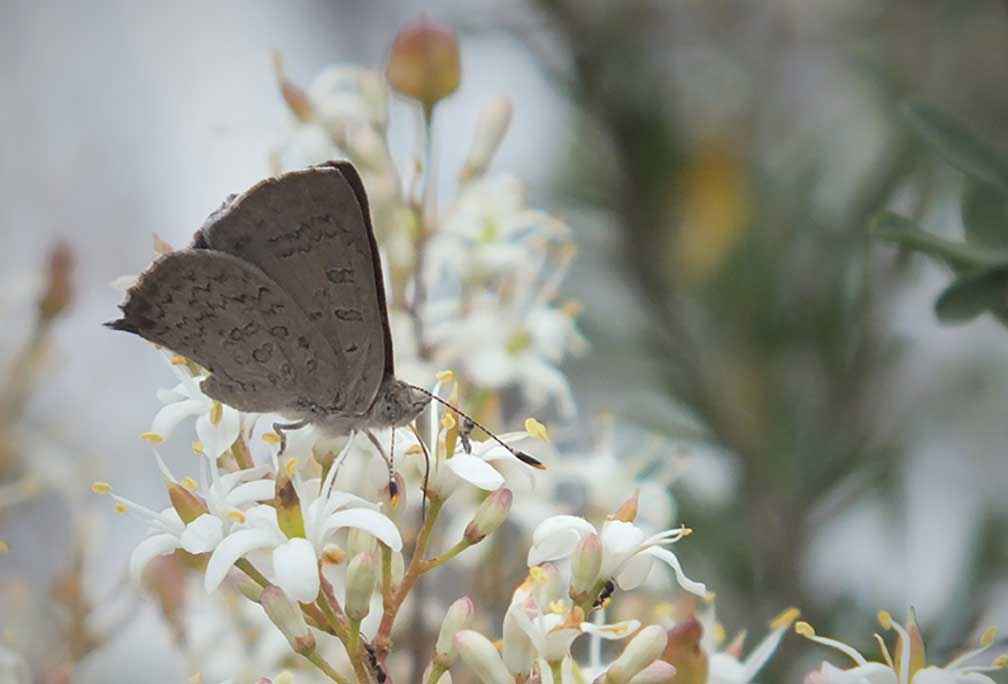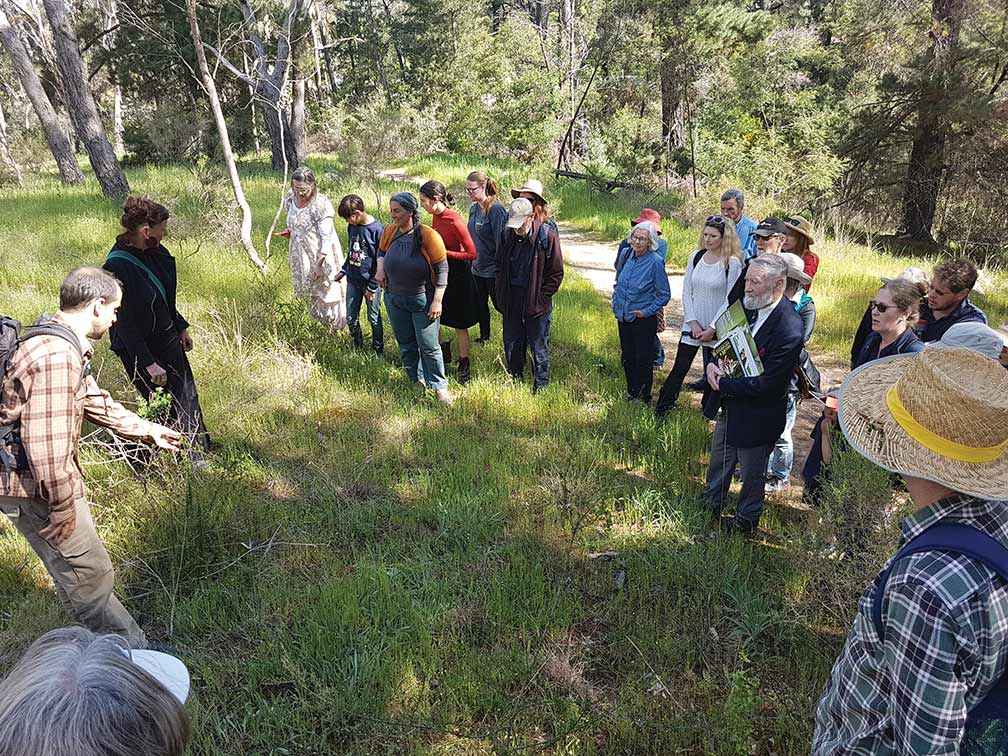Victorian Landcare Magazine - Summer 2022 , Issue 83

The nationally endangered Eltham copper butterfly (Paralucia pyrodiscus lucida) has a dramatic history. The species was formally described in 1951 having been collected at a number of sites around Eltham from 1923. Subsequent lack of records over the next 37 years combined with housing development around the northern and western suburbs of Melbourne resulted in the belief that they had become extinct.
The butterfly was rediscovered at Eltham in 1987 on a property about to be subdivided.
Community campaigning for this tiny insect resulted in eight hectares of habitat around Eltham and Greensborough being purchased and protected. A statewide search was also triggered and by 1988 nine colonies had been discovered, including two new regions: Castlemaine and the Kiata/Salisbury area.

Above: The Eltham copper butterfly is a small attractive butterfly with bright copper colouring on the tops of its wings that lives in dry open woodlands.
This summer (2021-22), ecologists from the Wetland Revival Trust have been working with a team of citizen scientists to uncover new populations of the butterfly in northern Victoria. An area of 1100 hectares was mapped for the larval food plant, sweet bursaria (Bursaria spinosa) and follow up butterfly surveys carried out where it occurred. This search, funded through the Victorian Government Biodiversity On-ground Action Icon Species Grants program (2021) resulted in five new populations being found around Mount Alexander Shire and in the Wimmera.
This work builds on a similar search carried out in 2011 when a 3000-hectare search revealed eight new populations around Central Victoria and at Wail. The new populations are very localised with the butterfly only occurring in 3-25 per cent of suitable habitat. Numbers of butterflies are also very small, with populations of around 50 being peppered across a larger area.
The Eltham copper butterfly, like many of the blue butterfly family, is ecologically interdependent with two species – a Notoncus ant species and the sole larval food plant, sweet bursaria (Bursaria spinosa).

Above: An Eltham copper butterfly on the flower of a sweet bursaria.
Adult Eltham copper butterflies lay their eggs on or at the base of sweet bursaria. The eggs hatch and the larvae make their way to the ant nest where they are tended and guarded by Notoncus ants. The butterfly larvae are believed to give off chemicals and make noises that pacify ant aggression, mimic ant brood hormones and attract and alert ants if the larvae are alarmed. Butterfly larvae produce sugary secretions from their bodies to feed the ants – knowing exactly how much to produce for the number of ants they need to guard them.
The nocturnal ants then lead the larvae out at night to browse on the sweet bursaria leaves and defend them from the many nocturnal predators that see them as a juicy snack. The larvae pupate in or near the ant nest, with adult butterflies emerging from October to March each year, peaking from November to January. The adults then feed on the nectar of sweet bursaria flowers, before they lay their eggs at the base of the plant and the cycle begins again.
The butterfly is listed as threatened under the Victorian Flora and Fauna Guarantee Act 1988 and as endangered under the Commonwealth Environment Protection and Biodiversity Conservation Act 1999. This places considerable importance on managing the small number of known population sites and locating any potential new sites so they can be protected from threats.
Land clearing and fire are two of the main threats to the species. It is critical that we search for unrecorded populations so they can be protected, particularly from planned burns. The habitat around butterfly populations is vital and must be protected from over burning for the butterfly and their complex ecological relationships to survive.

Above: From left, Karl Just and Elaine Bayes at an education day on sweet bursaria and the Eltham copper butterfly at Kalimna Park, Castlemaine in November 2019.
Knowledge of where Eltham copper butterflies occur is provided back to DELWP who use it to ensure that fuel reduction burns and other management actions are carried out with consideration of this species.
Landholders can help by retaining and restoring native understorey plants, and, if appropriate to the area, by planting sweet bursaria. Look for the copper sparkle of flying adults from early November to January. Sightings can be reported on the Butterfly Australia app available at www.butterflies.org.au
Insect diversity is related to plant diversity and health.
Our knowledge of the insect world and its complex interactions is poor. I hope that the Eltham copper butterfly can be a flagship species for butterflies in general, and also for the protection of remnant bushland. We cannot manage threatened species independent of their habitat.
Search for the Eltham copper butterfly on Facebook for volunteer events related to the Eltham-Greensborough population and visit www.butterflies.net.au to find out more about projects across the state.
Elaine Bayes is a co-director at Wetland Revival Trust.
For more information contact her through the contact form on the website.